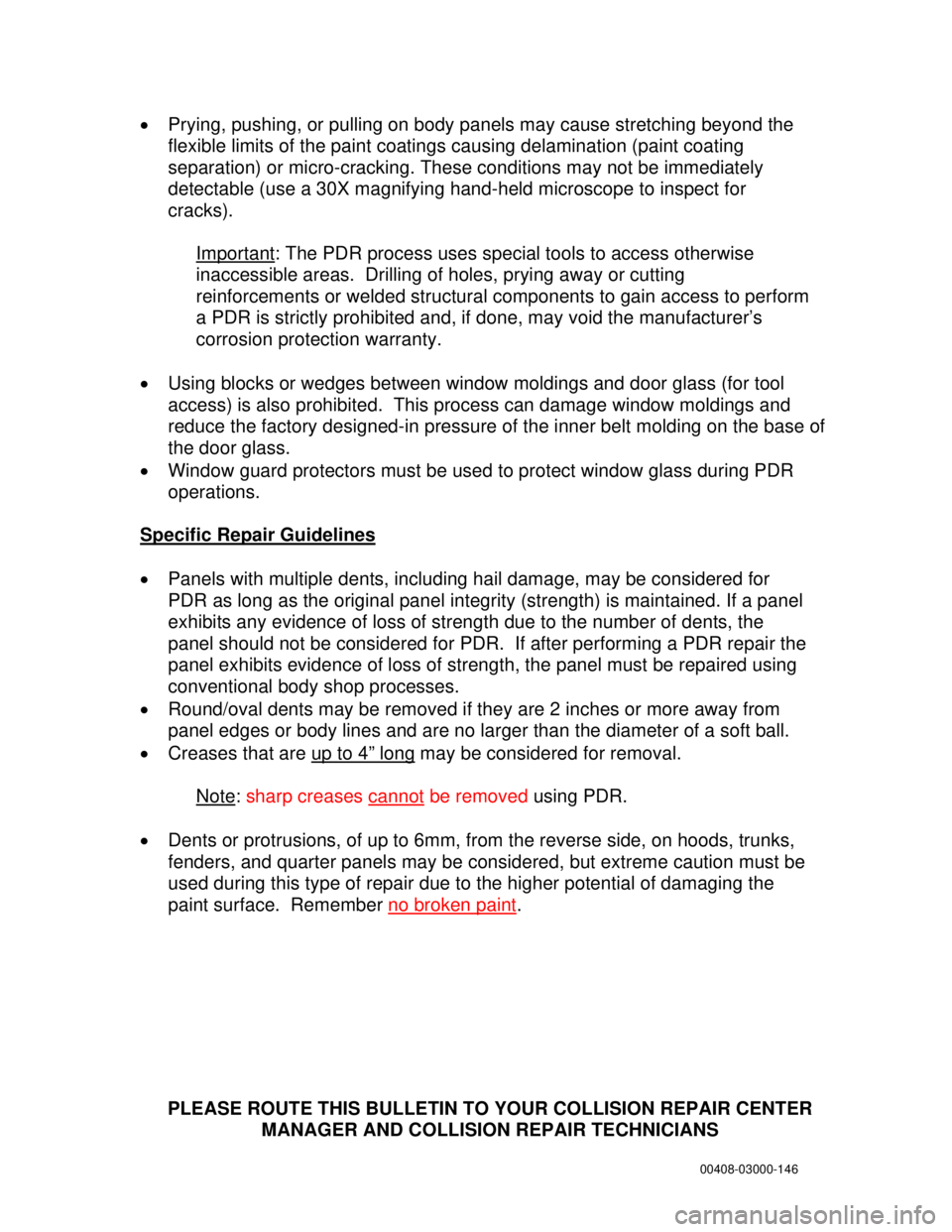PLEASE ROUTE THIS BULLETIN TO YOUR COLLISION REPAIR CENTER
MANAGER AND COLLISION REPAIR TECHNICIANS
00408-03000-146
• Prying, pushing, or pulling on body panels may cause stretching beyond the
flexible limits of the paint coatings causing delamination (paint coating
separation) or micro-cracking. These conditions may not be immediately
detectable (use a 30X magnifying hand-held microscope to inspect for
cracks).
Important
: The PDR process uses special tools to access otherwise
inaccessible areas. Drilling of holes, prying away or cutting
reinforcements or welded structural components to gain access to perform
a PDR is strictly prohibited and, if done, may void the manufacturer’s
corrosion protection warranty.
• Using blocks or wedges between window moldings and door glass (for tool
access) is also prohibited. This process can damage window moldings and
reduce the factory designed-in pressure of the inner belt molding on the base of
the door glass.
• Window guard protectors must be used to protect window glass during PDR
operations.
Specific Repair Guidelines
• Panels with multiple dents, including hail damage, may be considered for
PDR as long as the original panel integrity (strength) is maintained. If a panel
exhibits any evidence of loss of strength due to the number of dents, the
panel should not be considered for PDR. If after performing a PDR repair the
panel exhibits evidence of loss of strength, the panel must be repaired using
conventional body shop processes.
• Round/oval dents may be removed if they are 2 inches or more away from
panel edges or body lines and are no larger than the diameter of a soft ball.
• Creases that are up to 4” long
may be considered for removal.
Note
: sharp creases cannot be removed using PDR.
• Dents or protrusions, of up to 6mm, from the reverse side, on hoods, trunks,
fenders, and quarter panels may be considered, but extreme caution must be
used during this type of repair due to the higher potential of damaging the
paint surface. Remember no broken paint
.
